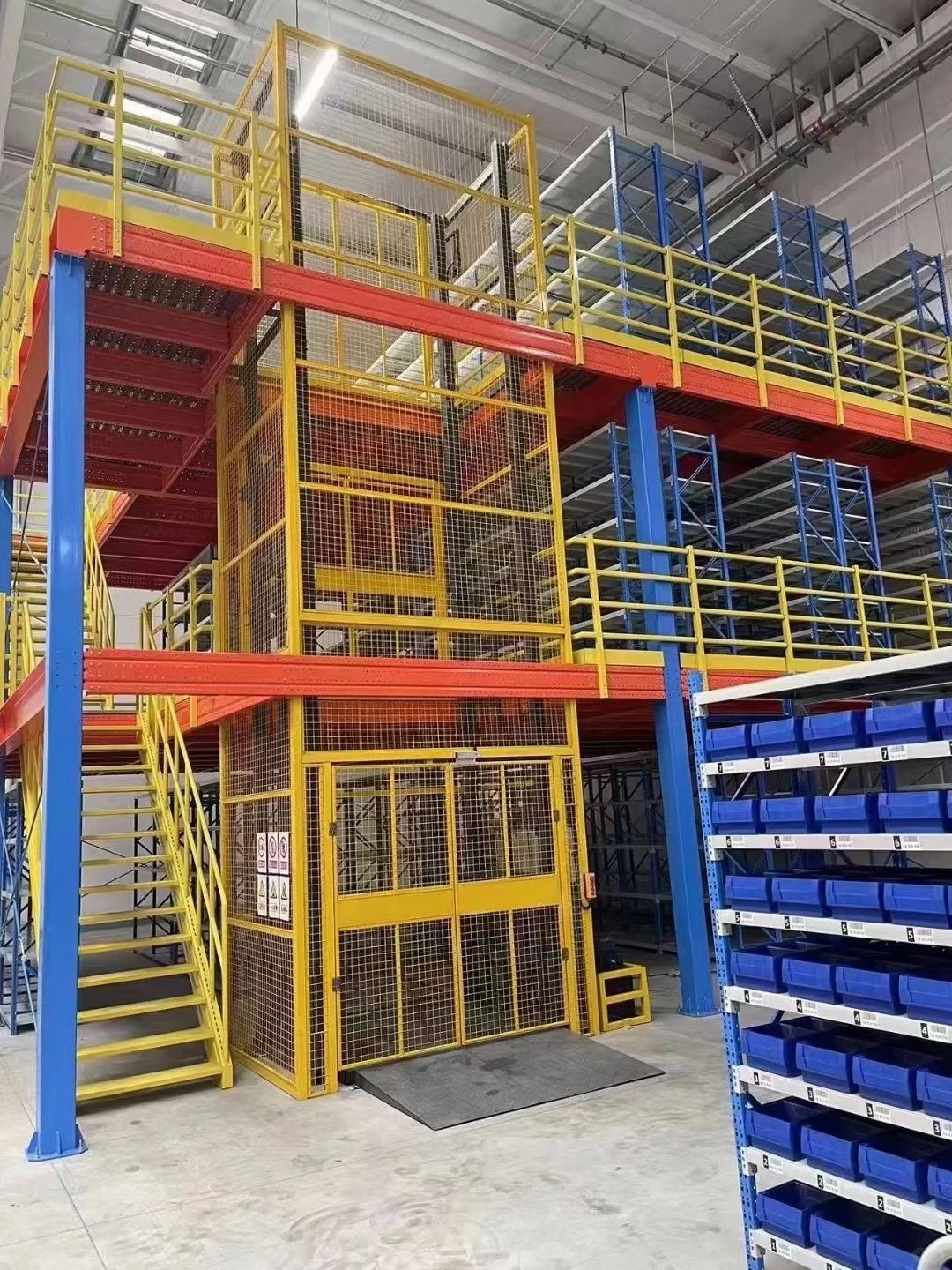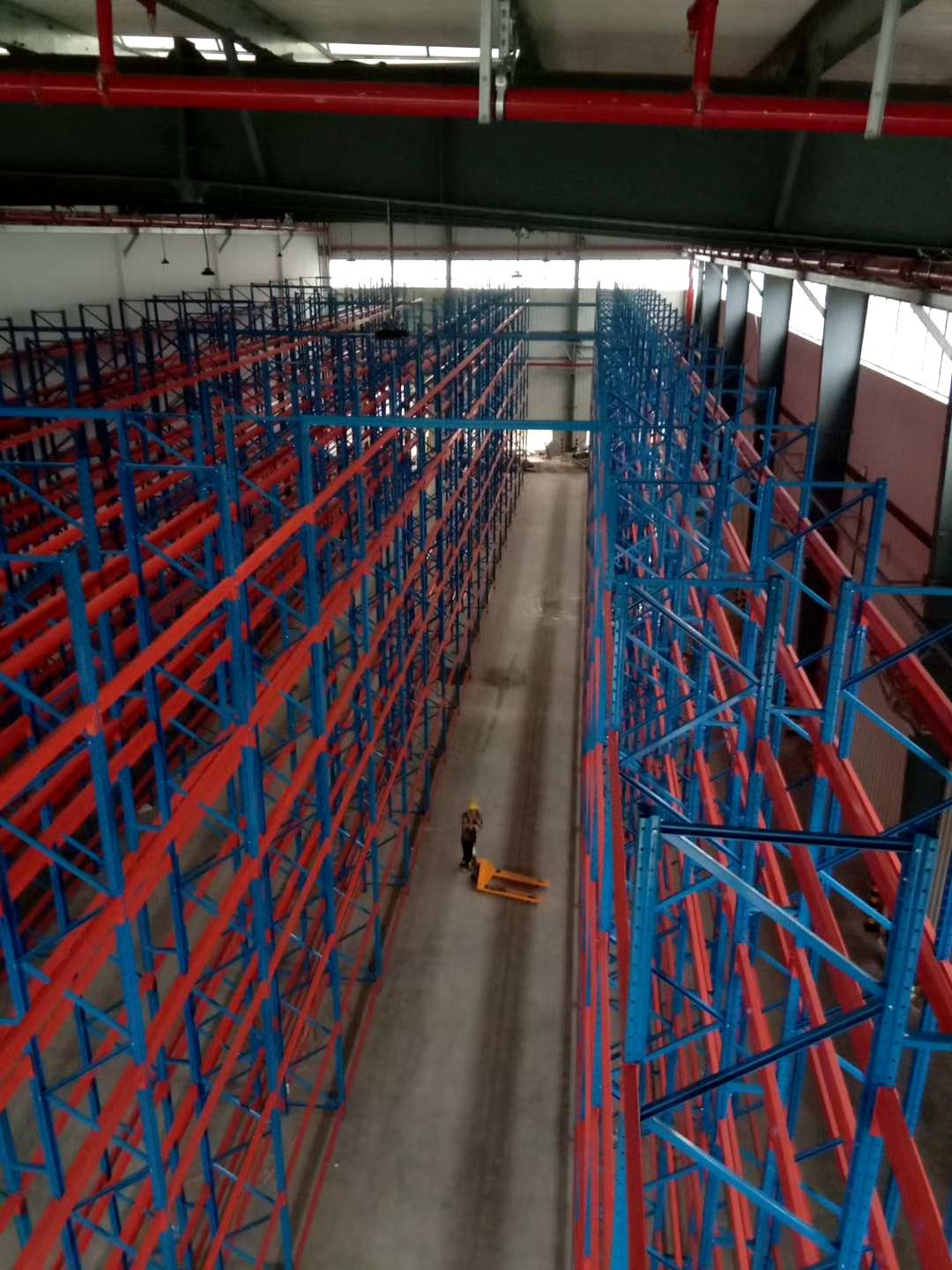Warehouse racking systems are the backbone of efficient logistics, holding immense weight and value. Yet, their structural integrity hinges on often-overlooked components. Among the most vital are warehouse racking safety pins. These seemingly simple devices play an outsized role in preventing catastrophic failures, protecting personnel, inventory, and infrastructure. Neglecting them is a gamble no operation can afford. Let's delve into seven crucial aspects of warehouse racking safety pins that underscore their indispensable nature.

1. Defining the Purpose: What Exactly Are Warehouse Racking Safety Pins? (And Why They Matter)
Warehouse racking safety pins are sturdy, typically cylindrical or slightly tapered, metal pins designed to secure the critical beam-to-upright connections in pallet racking systems. They are inserted through pre-punched holes where the beam end connector hooks onto the upright column.
The Core Function: Their primary job is to act as a physical barrier, preventing the beam from accidentally becoming dislodged or "kicking out" of the upright connector. This can happen due to various forces:
Impact: The most common cause – a forklift, pallet, or other equipment striking the rack leg or beam directly.
Pallet Drag: When a pallet is pulled out unevenly or catches on the beam, exerting upward or lateral force.
Uneven Loading: Excessive weight on one end of a beam can create torsional forces.
Vibration: Consistent vibration from machinery or nearby operations can gradually work components loose.
Settlement/Shifting: Minor ground movement or rack settling over time.
The Stakes: A dislodged beam is often the first domino in a potential rack collapse. Warehouse racking safety pins are the last line of defense, holding the connection firm under impact or stress, buying critical seconds to prevent a total failure. They are fundamental engineered safety features, not optional accessories.
2. Preventing Catastrophe: How Safety Pins Mitigate Collapse Risks
The paramount role of warehouse racking safety pins is accident prevention. Their effectiveness lies in directly countering the mechanisms that lead to racking failures:
Impact Resistance: When a forklift collides with a rack upright (a frequent occurrence), the force travels up the column. Without a safety pin, this impact can easily jar the beam connector hooks out of their engaged position in the upright holes. The pin physically blocks the path the hook would need to travel to disengage, absorbing and redistributing the energy.
Containing Upward/Downward Movement: While connectors primarily resist downward forces, impacts or pallet drag can generate upward forces. Safety pins prevent the beam end connector from lifting vertically out of its seated position.
Lateral Stability: They add rigidity to the beam-to-upright joint, helping resist lateral sway or shifting, especially important in narrow-aisle configurations or seismic zones.
System Redundancy: They provide a critical secondary locking mechanism beyond the initial engagement of the beam connector hooks. This redundancy is essential for safety-critical structures.
Mitigating Progressive Collapse: By preventing a single beam from dislodging, warehouse racking safety pins help contain damage to a localized area. A single dislodged beam can overload adjacent connections, triggering a cascading, progressive collapse involving multiple bays – safety pins significantly reduce this risk.
3. Compatibility is Key: Types of Safety Pins and Matching Your Rack System
Not all warehouse racking safety pins are created equal. Using the correct type is non-negotiable for safety and effectiveness. Compatibility depends on your specific racking manufacturer and beam connector design:
Pin Diameter: Must match precisely the diameter of the holes in both the beam end connector and the upright frame. A pin too small won't fill the hole, allowing movement; a pin too large simply won't fit. Common diameters include 13mm, 16mm, and 19mm, but others exist.
Pin Length: Must be long enough to pass completely through both the beam connector and the upright leg, but not so long that it protrudes excessively, creating a snag hazard or interfering with pallet placement. Length is determined by the combined thickness of the connection point.
Head Style: Most safety pins have a formed head (like a large rivet head) on one end and a retaining clip (R-Clip, Hairpin Clip, Lynch Pin) or deformable end on the other to prevent the pin from falling out.
Retaining Clip (R-Clip/Hairpin Clip): Allows for easier removal and re-insertion during reconfiguration. Crucially, these clips must always be fully engaged.
Deformed End/Permanent: Some pins have one end mechanically deformed after insertion, making them semi-permanent (often requiring cutting for removal). Less common for standard applications.
Material: Typically made from hardened steel (e.g., grade 8.8 or higher) to withstand shear forces without bending or breaking. Galvanized or yellow-zinc plated finishes resist corrosion.
Manufacturer Specificity: Always use safety pins specified by your rack manufacturer or a certified, compatible alternative. Never assume generic pins are suitable. Rack manufacturers design their connectors and pins as an integrated safety system. Using incorrect pins voids warranties and compromises safety.
4. Correct Installation: The Non-Negotiable Step for Effective Protection
Even the highest quality warehouse racking safety pins are useless if not installed correctly. Proper installation is paramount:
Clean Holes: Ensure the holes in the beam connector and upright are free of dirt, grease, paint, or debris that could prevent the pin from seating fully.
Align Holes: Position the beam connector securely onto the upright so the holes are perfectly aligned. The connector hooks must be fully seated in the upright perforations before pin insertion.
Full Insertion: Drive the pin completely through both the beam connector hole and the upright hole until the formed head is flush against the connector's outer surface.
Secure the Clip: If using a pin with a retaining clip (R-Clip, Hairpin Clip), ensure it is fully and positively engaged in the groove at the end of the pin shaft. The clip's legs should be spread correctly and locked in place. A loose or missing clip renders the pin ineffective.
Visual Confirmation: From both sides of the connection, visually confirm the pin passes through both components and the retaining mechanism is secure. You shouldn't see daylight through the holes on either side of the pin.
No Modifications: Never hammer, bend, or modify pins to force them to fit. If a pin doesn't insert smoothly, check for misalignment, debris, or incorrect pin size/type.
Every Connection: Warehouse racking safety pins must be installed on every beam level, at every connection point (both ends of every beam), without exception.

5. Vigilance Through Inspection: Ensuring Safety Pins Remain Effective
Warehouse racking safety pins are subject to wear, damage, and accidental removal. Regular, documented inspections are essential to ensure they remain present and functional:
Inclusion in Routine Checks: Safety pin inspection must be a formal part of the warehouse's regular racking inspection protocol (e.g., weekly operational checks by trained staff, quarterly/annual inspections by a competent person/SE).
Checklist Items: Inspectors must specifically look for:
Presence: Is a pin installed at every required connection point?
Correct Type: Is it the manufacturer-specified pin? (Diameter, length, head/clip style).
Full Insertion: Is the pin driven fully through both components? Is the head flush?
Clip Security: Is the retaining clip (if used) fully engaged and undamaged? Are the legs spread correctly and locked? (Missing clips are a common, critical finding).
Damage: Is the pin bent, cracked, sheared, excessively corroded, or mushroomed at the ends?
Obstruction: Is the pin obstructed by pallets, debris, or strapping, making inspection difficult or indicating potential impact?
Immediate Action: Any missing, damaged, or incorrectly installed warehouse racking safety pin constitutes a serious safety hazard. The affected beam must be immediately unloaded, isolated (tagged out of service), and reported. The pin must be replaced with the correct type before the beam is reloaded. Never operate racking with missing or compromised safety pins.
Documentation: All inspections and corrective actions must be meticulously documented to track issues, demonstrate compliance, and identify trends (e.g., frequent pin damage in a specific area indicates a need for better forklift traffic management or additional protection).
6. The High Cost of Neglect: Consequences of Missing or Failed Safety Pins
Ignoring the importance of warehouse racking safety pins carries severe, potentially devastating consequences:
Catastrophic Rack Collapse: The most dire outcome. A dislodged beam can initiate the collapse of multiple bays, endangering lives, destroying inventory, and causing massive structural damage. The financial cost runs into hundreds of thousands or millions, not including human cost.
Partial Failures & Falling Loads: Even a single beam dislodging can cause pallets and products to fall, creating significant strike hazards for personnel below and damaging goods.
Forklift Damage & Operator Injury: Falling loads or collapsing racks directly endanger forklift operators and nearby workers, leading to serious injury or death.
Operational Downtime: Any racking failure, even a localized one requiring unloading and repair, halts operations in that area, causing significant productivity losses and delivery delays.
Regulatory Fines & Liability: OSHA (Occupational Safety and Health Administration) and equivalent bodies globally have strict regulations regarding racking safety (e.g., OSHA General Duty Clause, ANSI MH16.1/16.3 standards). Missing safety pins are a clear violation, leading to hefty fines. Companies face significant liability lawsuits in the event of injuries or fatalities caused by preventable rack failures.
Increased Insurance Premiums: A history of racking incidents or safety violations, including missing safety components, leads to dramatically higher insurance costs or even denial of coverage.
Reputational Damage: Serious accidents involving warehouse safety damage a company's reputation with customers, partners, and potential employees.
7. Best Practices for Warehouse Racking Safety Pin Management
Proactive management ensures warehouse racking safety pins deliver maximum protection:
Inventory & Availability: Maintain an adequate stock of the correct manufacturer-specified pins and retaining clips. Store them conveniently for maintenance staff. Running out leads to dangerous delays in repairs.
Training: Train all warehouse personnel (operators, supervisors, maintenance, receiving) on the critical importance of safety pins, how to visually identify missing or damaged pins, and the reporting procedure. Forklift operators must understand how impacts affect racking.
Clear Reporting Protocol: Establish a simple, zero-blame process for any employee to report missing, damaged, or dislodged pins immediately.
Impact Policy & Procedures: Implement and enforce a strict policy requiring operators to report any forklift impact with racking, no matter how minor. Trained personnel must then inspect the impacted area, including all safety pins above and below the impact point, before operations resume nearby.
Documented Inspections: Conduct and record regular inspections at defined frequencies by trained personnel. Use detailed checklists.
Professional Audits: Engage a Rack Safety Inspector (RSI) or Structural Engineer (SE) specializing in storage systems for annual or bi-annual comprehensive inspections, including verification of safety pin integrity and installation.
Damage Replacement: Always replace damaged pins with new, manufacturer-specified pins. Never attempt to straighten a bent pin or reuse a damaged clip.
Protection from Impacts: Consider installing robust column guards and barrier posts, especially in high-traffic areas, to prevent forklifts from directly striking uprights and damaging pins/connections in the first place.
Warehouse racking safety pins are a perfect example of how a small, inexpensive component can be utterly critical to the safety and stability of a massive system. They are not mere accessories; they are fundamental engineered safety devices designed to prevent catastrophic failure. Understanding their purpose, ensuring correct type and installation, maintaining them through rigorous inspection, and appreciating the dire consequences of neglect are all non-negotiable aspects of responsible warehouse management. Investing time, resources, and diligence into the proper specification, installation, and maintenance of warehouse racking safety pins is an investment in human safety, asset protection, operational continuity, and regulatory compliance. Never underestimate the power of the pin – it could be the only thing standing between a minor incident and a devastating disaster. Make them a top priority in your safety program today.







